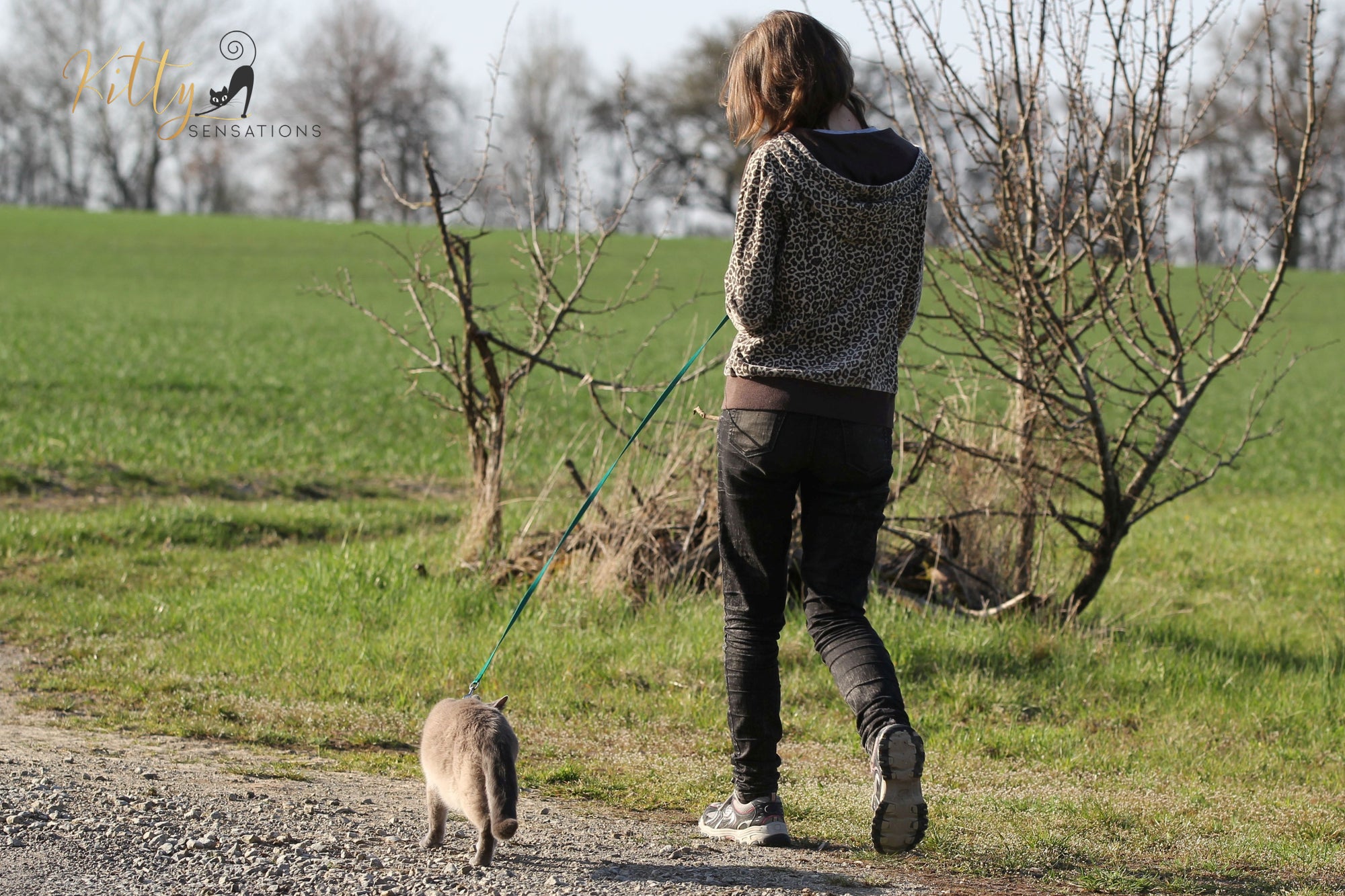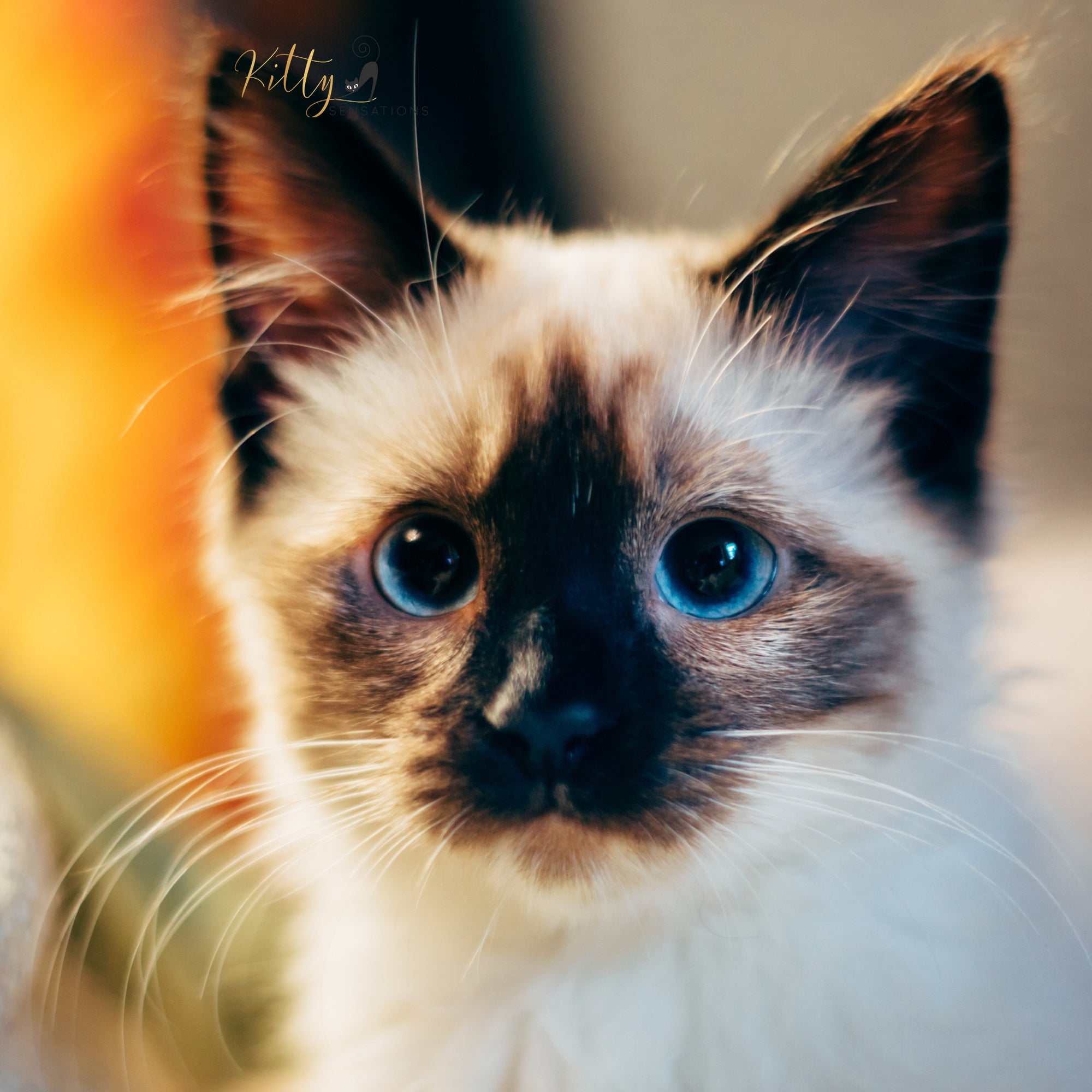Like people, cats go through different stages in their life. They start as young kittens and then grow into fully-functional cats capable of doing many things.
Cats also go through different life stages, like losing baby teeth. However, there are significant differences between the human life cycle and a cat's stages of life. As a cat owner, you should take care of your cat in a way that's appropriate for its age and take it to the vet for regular checkups.
Many people wonder about a cat's growth and have questions like 'how long do cats grow?'. Read on to find out the answer to this question and the different stages in a cat's life.
How Long Do Cats Grow?
Cats usually continue to grow until they are one year old. In cat years, a 12-month-old cat is roughly the same age as a 15-year-old person.
However, the duration could differ depending on each cat. Some cats may even grow after the 12-month mark.
Cats are generally considered fully grown when they reach 18 months, which is 21 human years.
A cat can continue to grow in size between 12 and 18 months. There are specific breeds that reach their full size at 2 years of age. For example, Maine Coons keep growing until they are 2 years old, and British Shorthairs reach their full size at 3 years old.
When Do Male Cats Stop Growing?
There are a few differences between male and female cats' growth. Male cats are typically larger than female cats. Males also stop growing later in life and at a slower rate than their female counterparts.
Female cats hit puberty earlier than male cats do. Adult males reach higher weight, length, and height ranges than females. For example, a male Bengal cat can weigh up to 22 pounds, although the breed's original weight is about 16 pounds.
Life Stages Of a Cat
A cat's life cycle is not limited to the kitten, adulthood, and senior stages. There are more stages to a cat's life than you think.
You should provide your cat the best care and nutrition at each age to help it have a happy and healthy life.
Here are the different stages of a cat's life.
Kitten Stage (0-6 Months)

A kitten is similar to an infant, and this stage lasts from 0 to 6 months. Kittens grow much faster than humans during the first 6 months of their life.
Appearance
Kittens are easy to identify as they are adorable tiny baby cats. They have short ears and tail. As they grow, their ears and tail grow proportionate to their body.
Behavior
Kittens are newborns, so they continuously learn about the world around them. They're helpless and rely entirely on their mothers and human carers. They want their care and protection.
Kittens love to explore their surroundings as they grow. They learn by exploring and observing their environment and surroundings. They are constantly driven by curiosity.
Due to their lack of maturity and fear, and high energy levels, they are often prone to mischief. Therefore, you need to monitor your kittens and their whereabouts.
Care And Training for Kittens
When you get a kitten to adopt, it will probably have weaned from its mother and on solid food. It will also be able to run around and jump by itself.
Therefore, they might try to meddle with dangerous things, not knowing the risks of those items. Make sure to kitten-proof your home and keep things like electrical cables and cords out of your kitten's reach.
Secure window screens and doggy doors to prevent them from escaping the house. You can also use an invisible fence for cats to make sure your cat is within your defined boundaries.
You must meet with a vet and get the mandatory vaccinations required for your kitten.
Nutritional Needs for Kittens
Kittens are at a crucial point of growth in their lives. Therefore, they need the right amount of protein for growth. Feed them high-quality kitten-specific food. You may have to provide them with smaller portions throughout the day to keep their nutritional needs on par with the requirements.
You may have to adjust the meals and feeding schedule as your kitten grows to avoid health issues like being overweight.
Junior Cat Stage (6 Months-2 Years)

The junior cat stage is from 6 months to 2 years and is equivalent to the human adolescent stage. Cats tend to lose their babyish features at this age and reach physical and sexual maturity.
Junior Cat Appearance
This is the transitional period from the kitten stage. Cats experience growth spurts that might make them look long and lean, similar to teenagers.
Behavior
This transitional life stage is when cats start settling down. They grow out of their mischief and try to behave more like adult cats. By the time these cats are about 18 months old, they are active and playful, but tend to be a lot calmer than when they were during the kitten stage.
Care And Training
You need to be up to date on its vaccination schedule. As your kitten grows out of the first stage of its life cycle and slowly grows into an adult, it will require less supervision and will be able to manage many things by itself.
Training a cat at this stage should be more about reinforcing boundaries and rules and continued socialization.
Nutritional Needs
When your cat is one year old, you must move from feeding kitten food to adult cat food to your feline. It could be canned wet food or adult kibble; the choice is yours.
A standard adult formula will be able to meet its nutritional needs. There's a chance for your cat to become overweight once it is spayed or neutered, so you need to monitor it to ensure that it's not being overfed.
Prime cat stage (3-6 years)

The prime cat stage is when a cat is in the prime of its life, between 3 and 6 years of age. It is equivalent to a twenty or thirty-year-old human.
Appearance
A cat is at the peak of its life at this stage. Therefore, it will be at the height of health and fitness. It will be the tallest and longest in this state of its life. It should be filled out but not overweight.
A sleek body and shiny, healthy coat are ideal for a cat at this life cycle stage.
Behavior
At this stage, your cat is fully settled in adulthood and will show the behaviors of an adult cat, which may vary from one to another. Apart from any disorders or illnesses, your cat's personality at this stage will be there for the rest of its life.
A healthy cat at this stage should be playful and active with well-established routines.
Care And Training
Although a cat is in its prime stage of life at this point, you still need to take it for regular checkups to keep up with its health status.
You'll have a fully-trained cat at this stage, but you must keep reminding it of the rules. You may have to consult a professional if your cat doesn't come out of problematic behavior.
Nutritional Needs
You need to move into giving your cat adult food at this stage. It could be adult kibble or canned wet food, depending on your preference. Make sure to provide your cat with high-quality food that can meet its nutritional needs.
Mature Cat Stage (7-10 Years)

A mature cat is between 7 and 10 years of age. Cats at this life stage are equivalent to humans between their forties and fifties.
Appearance
An active cat at this age might not appear particularly different from a cat at the prime stage. It is the age when cats are more likely to gain weight. Their coats may also begin to lose some of the sheen.
Behavior
Some cats may be playful and active at this stage. However, most cats at this stage tend to slow down and become more sedentary.
Care And Training
You may have to reinforce training as your cat matures, as it may need to remember some of the things it learned if they are not practiced.
Cats are more likely to gain weight and are at risk of diabetes and kidney and thyroid diseases. Therefore, cats at this life stage must be taken for regular checkups by the vet.
Owners must also monitor their activity levels at home and for symptoms like vomiting and diarrhea.
Nutritional Needs
Mature cats need appropriate nutrition to keep up with their health. They require vitamin C to boost their immune system as this is the most impacted at this life stage.
Senior Geriatric Stage (11 Years And Older)

Cats at this stage are divided into two age categories. The senior stage is 11 to 14 years, and the geriatric stage is 15 years and above.
The senior stage is equivalent to humans in their sixties and seventies, while the geriatric stage is equivalent to humans in their eighties and above.
Appearance
Senior cats will show signs of aging, as their coats lose luster and their fur turns white. These features will be more prominent as they grow older.
Behavior
Cats slow down very much as they age. They are also more prone to joint issues and arthritis that may affect their activity levels.
Care And Training
Caring for and training a cat at this stage will be challenging as you need to focus more on keeping it healthy and comfortable. Ensure that it's easy for your cat to reach its food and water. Also, ensure it can reach the litter box when needed.
Playtime might not last for long at this age. It's more about cuddling and strengthening your bond with your cat.
Nutritional Needs
Cats at this age are prone to many health problems. You must give them a quality senior cat food formula. Ensure that your cat is well-hydrated by drinking a lot of water.
When Should I Feed My Kitten Adult Cat Food?
You should switch to feeding your kitten adult cat food when it is 12 months of age. However, you may have to change between 18 months and 2 years for larger breeds.
Here's how you must make the transition from kitten food to adult food:
- Days 1-2: Give 3/4 of the usual amount of kitten food and add 1/4 of the adult cat food
- Days 3-4: Give one part of kitten food and one part adult cat food
- Days 5-7: Give 1/4 kitten food and 3/4 adult cat food
- Days 8-10: Give only adult cat food
Final Thoughts
Cats are considered to be fully grown when they are 12 months old. However, this could change depending on the breed, as some cats grow between 18 months and 2 years.
A cat goes through different life stages, from the kitten to the senior and geriatric stages.
At each stage, you should ensure that the cat gets adequately cared for, trained, and given high-quality food to meet its nutritional needs.
Frequently Asked Questions
At What Age Is A Cat Fully Grown?
A cat is considered fully grown when it's 12 months old.
Do Cats Get Bigger After 6 Months?
Most but not all cats grow even after 6 months. Depending on the breed, most cats will continue to grow for up to 1 to 2 years.
How Old Is The Oldest Cat In The World?
The oldest cat in the world is 26 years and 329 days old, equivalent to 120 human years.



